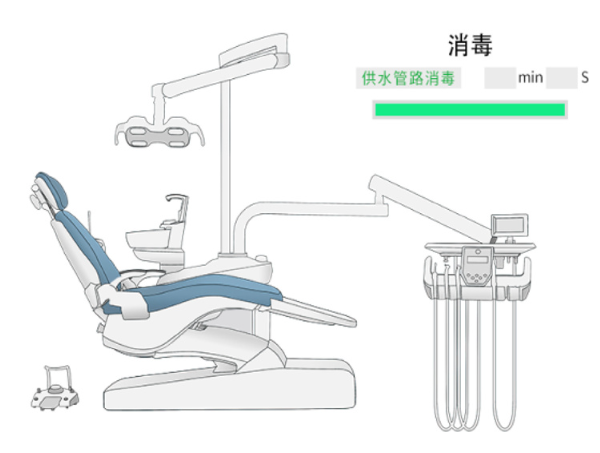The Importance of Sterilizing Dental Chair Trays
The inception of the modern dental practice has been marked by significant advancements in patient comfort and safety, with the reclining dental chair being a pivotal development. However, beyond the visible aspects of dental care, such as the ergonomic design of a dental recliner or the comfort provided by a reclined position in a dental chair, lies the critical, albeit less conspicuous process of sterilization.
The sterilization of dental trays, an indispensable component of dental procedures, is paramount in preventing the transmission of infectious diseases and ensuring the highest standards of hygiene. These trays, while they may not boast the unique appeal of a tooth-shaped chair or the sophisticated mechanisms of clinic chairs for sale, are the unsung heroes of dental health safety.
This article delves into the history, risks, and best practices surrounding the sterilization of dental trays, a process as crucial as the invention of the first reclining dental chair. We will explore the meticulous journey from the pre-cleaning stage to the final storage of these vital instruments, emphasizing the gravity of sterilization in the safeguarding of both practitioners and patients.
The sterilization of dental trays, an indispensable component of dental procedures, is paramount in preventing the transmission of infectious diseases and ensuring the highest standards of hygiene. These trays, while they may not boast the unique appeal of a tooth-shaped chair or the sophisticated mechanisms of clinic chairs for sale, are the unsung heroes of dental health safety.
This article delves into the history, risks, and best practices surrounding the sterilization of dental trays, a process as crucial as the invention of the first reclining dental chair. We will explore the meticulous journey from the pre-cleaning stage to the final storage of these vital instruments, emphasizing the gravity of sterilization in the safeguarding of both practitioners and patients.
The Risks of Not Sterilizing Dental Trays
Failure to properly sterilize dental chair trays can have serious consequences for both dental professionals and patients. The risks of not sterilizing dental trays include the spread of infectious diseases, cross-contamination, and legal and ethical implications.
●One of the most significant risks of not sterilizing dental trays is the spread of infectious diseases. Dental procedures can create a high-risk environment for the transmission of bloodborne pathogens such as hepatitis B, hepatitis C, and HIV.
If dental trays are not properly sterilized, theycan become contaminated with these pathogens, and if reused without proper sterilization, they can transmit these diseases to other patients.
●Cross-contamination is another significant risk associated with not sterilizing dental trays. When trays are not properly sterilized, they can transfer bacteria and other pathogens from one patient's mouth to another, leading to the spread of infections.
This can occur even if a tray is used on a different area of the same patient's mouth, highlighting the importance of properly sterilizing all dental equipment.
●Beyond the immediate health risks, the legal and ethical implications of neglecting to sterilize dental trays are profound. Dental practices are legally obligated to provide a safe environment for their patients; a breach of this duty can result in severe legal repercussions, such as malpractice lawsuits. Ethically, dental professionals must place patient safety at the forefront of their practice by adhering to stringent sterilization protocols. The integrity of patient care depends on this commitment to rigorous standards of hygiene and safety.
The Process of Sterilizing Dental Trays
Sterilizing dental trays is a crucial step in ensuring the safety of both dental professionals and patients during dental procedures. The process of sterilizing dental trays involves several steps, including pre-cleaning the tray, disinfecting the tray, sterilizing the tray, and properly storing the sterilized trays.
●The first step in the process is pre-cleaning the tray. This involves removing any debris or organic matter from the tray's surface, making it easier to disinfect and sterilize. Pre-cleaning can be done using a detergent solution or by manually scrubbing the tray with a brush.
●The next step is disinfecting the tray. Disinfecting involves using a disinfectant solution to kill any microorganisms that may be present on the tray's surface. The disinfectant solution should be applied according to the manufacturer's instructions and left on the tray's surface for the recommended amount of time.
●After disinfecting, the tray must be sterilized to kill any remaining microorganisms. The sterilization method can vary depending on the type of tray and the dental practice's equipment.
Common sterilization methods include autoclaving, chemical sterilization, and dry heat sterilization. It is essential to follow the manufacturer's instructions for the chosen sterilization method to ensure effective sterilization.
●Finally, properly storing sterilized trays is essential to ensure they remain sterile until they are used in a dental procedure. Sterilized trays should be stored in a clean and dry environment, away from any potential sources of contamination. The storage area should also be regularly cleaned and disinfected to maintain a sterile environment.
Conclusion
Sterilizing dental trays is essential to maintaining patient safety and preventing the spread of infectious diseases. Dental professionals have a responsibility to ensure that all dental instruments, including trays, are properly sterilized before use.
By following the best practices outlined in this article, dental practices can ensure that their patients receive safe and effective dental treatment. We must prioritize proper sterilization procedures in dental practices to protect the health of patients and maintain high standards of patient care.
By following the best practices outlined in this article, dental practices can ensure that their patients receive safe and effective dental treatment. We must prioritize proper sterilization procedures in dental practices to protect the health of patients and maintain high standards of patient care.



Leave a comment